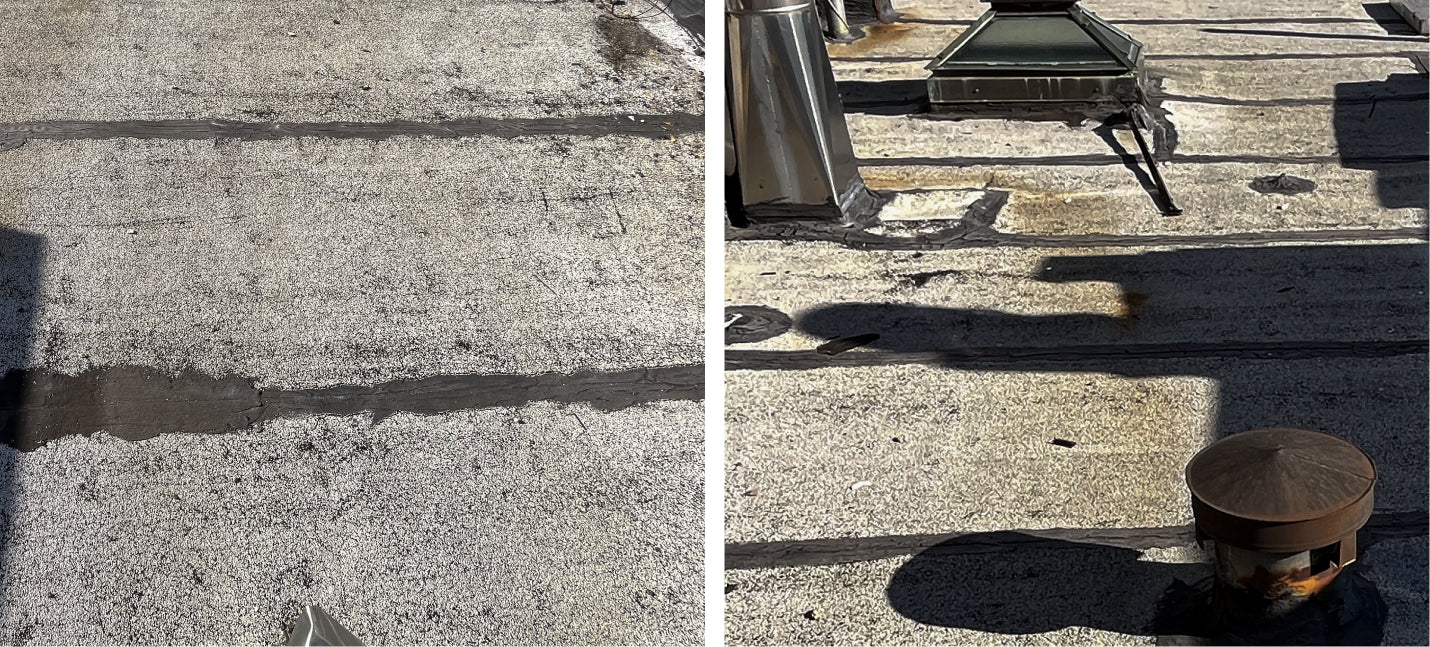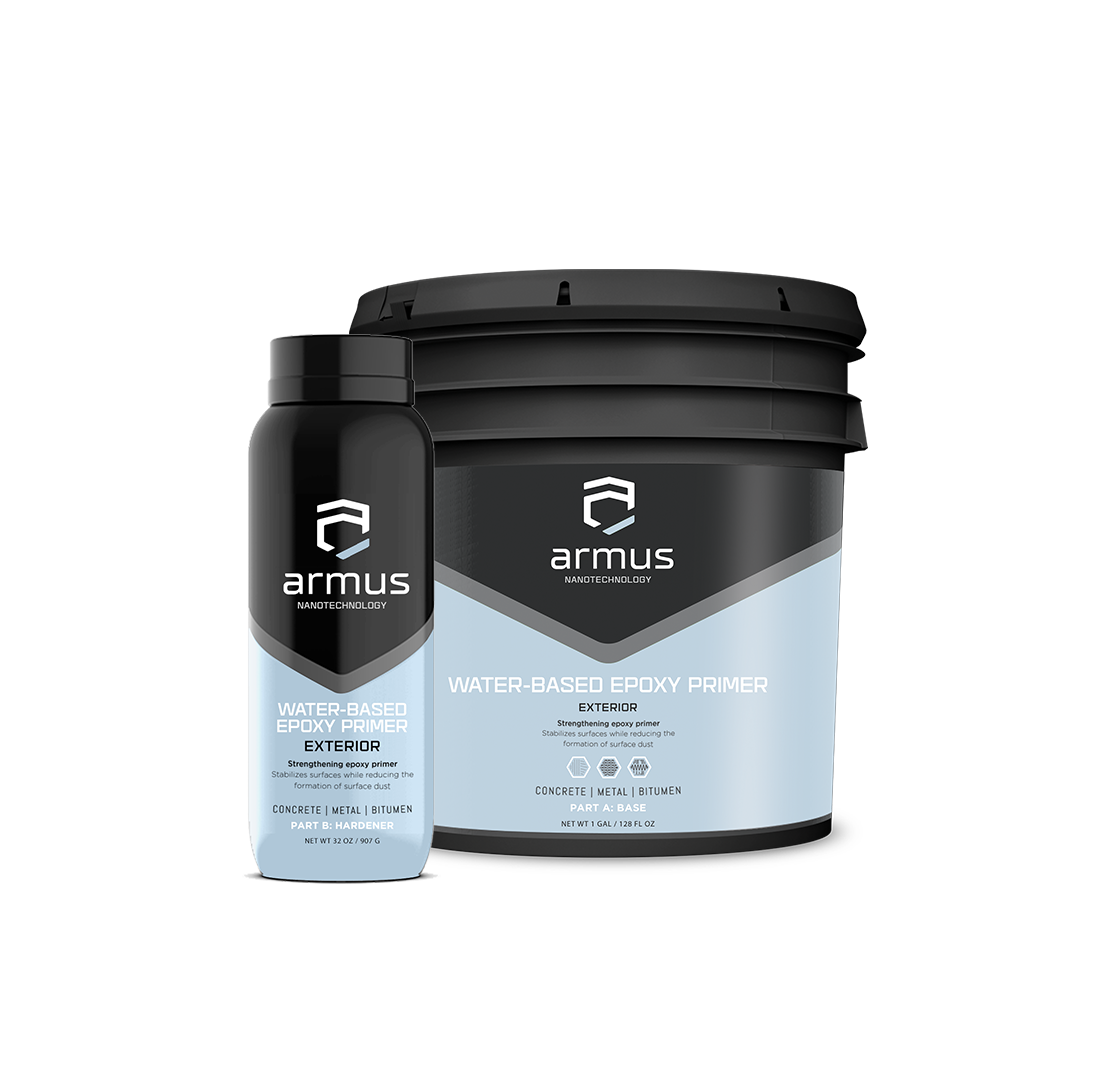
ROOF PA100 REPAIRS & PROTECTS An alligatoring MODIFIED BITUMEN RESIDENTIAL ROOF
- LOCATION: EAST 61ST ST, MANHATTAN NYC
- DATE APPLIED:
- SUBSTRATE: MODIFIED BITUMEN
- PRODUCT USED: WBE PRIMER & ROOF PA100
- APPLICATION METHOD: BRUSH & ROLLER
- SITE DESCRIPTION: RESIDENTIAL 1,200 SQFT ROOF
THE CHALLENGE
A 1,200 sqft modified bitumen roof atop a townhouse exhibited classic symptoms of "roof alligatoring." Years of unrelenting sun exposure had taken their toll, drying out the substrate and inducing a network of deep cracks across the surface.
The cracks compromised the roof's watertight integrity, increasing the risk of leaks and potential damage to the building's interior. The exposed cracks exacerbated the effects of weather and temperature fluctuations, further jeopardizing the roof's lifespan. The unsightly, alligator-like appearance detracted from the building's visual appeal and could negatively impact its image and value.
Simple patching or resurfacing solutions offered only temporary reprieve. These approaches fail to address the underlying cause of roof alligatoring – sun-induced drying and material fatigue – leaving the roof vulnerable to recurring leaks and premature failure.
THE SOLUTION
To definitively address these challenges, the Armus Roof PA100 system was employed. This two-pronged approach tackled both the immediate symptoms and the underlying cause of roof alligatoring.
Water-borne Epoxy Primer: Its low-VOC, water-borne formulation penetrated deeply into the cracked surface, filling voids and stabilizing any loose or delaminated areas. The hard epoxy finish created a robust base layer, sealing remaining cracks and enhancing overall adhesion.
Roof PA100 Topcoat: This high-performance elastomeric coating served as the final line of defense. Its liquid-applied nature seamlessly covered the entire surface, creating a monolithic waterproof barrier that effectively sealed all remaining cracks and crevices. The high elongation at break (450%) allowed the topcoat to accommodate thermal fluctuations without cracking or tearing, ensuring long-term durability. Additionally, Roof PA100's cool roof technology reflected solar heat, reducing energy consumption within the building.
The implementation of the Armus Roof PA100 system on the aging aluminum roof yielded demonstrably positive outcomes across multiple key metrics.
Previously vulnerable cracks were effectively sealed, eliminating their role as pathways for water infiltration and securing the building's interior from potential damage. The monolithic barrier created by Roof PA100's seamless application ensures long-term waterproofing, protecting the building's structural integrity and reducing the risk of costly repairs.
Roof PA100's superior reflective properties, exceeding those of the degraded aluminum coating, significantly reduced roof surface temperatures. This translated to decreased energy consumption for cooling within the building, leading to operational cost savings and a positive environmental impact.
The combined strength and flexibility of the Armus Roof PA100 system shielded the roof from further deterioration caused by environmental factors like sun exposure and thermal fluctuations. This extended the roof's lifespan, postponing the need for costly replacement and maximizing the return on investment for the building owner.
POST-APPLICATION RESULTS & evaluation
The implementation of the Armus Roof PA100 system yielded demonstrably positive outcomes. The previously “alligatoring” and leaky cracks were effectively sealed, eliminating infiltration pathways and securing the building's interior from water damage.
The combined strength and flexibility of WBE Primer and Roof PA100 formed a formidable barrier against further deterioration, significantly extending the roof's lifespan and postponing the need for costly replacement. This extension of service life translates to tangible economic benefits for the building owner.
Beyond functional improvements, the aesthetic appeal of the roof underwent a significant transformation. The unsightly alligatoring pattern was effectively masked by the seamless, uniform finish of Roof PA100, restoring the roof's visual integrity and contributing positively to the building's overall value.
Furthermore, the cool roof technology of the Roof PA100 topcoat played a crucial role in enhancing the building's energy efficiency. By reflecting solar heat away from the surface, Roof PA100 reduced the amount of heat absorbed by the building, leading to lower energy consumption for cooling purposes. This translates to operational cost savings for the building owner and aligns with broader sustainability goals.

project gallery
Pre-cleaning site visit. Existing worn modified bitumen substrate showing delamination.

Roof PA100 topcoat. Post-application.
Video

WBE Primer
A TWO-PART WATER-BORNE EPOXY PRIMER THAT CREATES A WATERPROOF BARRIER AND PROVIDES HIGH ABRASION RESISTANCE.
Use with Armus Roof PA100 topcoat.


Roof PA100
A two-part polyaspartic roofing repair topcoat that creates a waterproof barrier, blocks heat transfer and provides thermal insulation.
Use with Armus water-borne epoxy primer.

